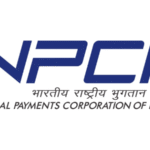Why Editorial Thinking Belongs in Every B2B Marketing Strategy

In the increasingly cluttered world of B2B marketing, Indian companies are discovering that campaigns alone aren’t enough. What sets successful brands apart today isn’t just frequency or spend, it’s storytelling. Editorial thinking, once the stronghold of newsrooms and content studios, is now emerging as a strategic pillar in B2B marketing playbooks across industries.
Unlike promotional messaging or one-off campaigns, editorial thinking focuses on consistent, audience-first communication. It’s about identifying what matters to the target audience, curating topics with clarity, and crafting a narrative that evolves over time. For B2B marketers in India, especially those catering to sectors like tech, manufacturing, SaaS, or logistics, this shift is proving essential in cutting through jargon and connecting with decision-makers.
What drives this change is a deeper understanding of how content builds trust. Buyers today aren’t just looking for products; they’re seeking partners who understand their pain points. Editorial thinking prompts marketers to shift focus from features to context, from products to problems. This shift naturally lends itself to formats such as whitepapers, newsletters, opinion pieces, research-backed blogs, and knowledge-driven webinars that educate and inform rather than just sell.
In India’s B2B landscape, where long sales cycles and committee-based decisions are the norm, editorial-led strategies provide continuity. Instead of pushing fragmented messages, brands are beginning to adopt newsroom-like discipline, calendarized content, strong headlines, thematic consistency, and topical relevance.
Moreover, this approach supports better alignment with media, public relations, analyst relations, and internal communication teams, creating a unified voice across all touchpoints. The result? Better engagement, increased recall, and deeper brand loyalty. As Indian B2B firms look to scale their presence in both domestic and global markets, embracing editorial thinking isn’t a nice-to-have. It’s fast becoming a competitive advantage, one that anchors trust, positions expertise, and drives conversations that actually matter.
















